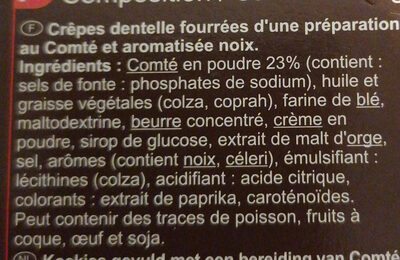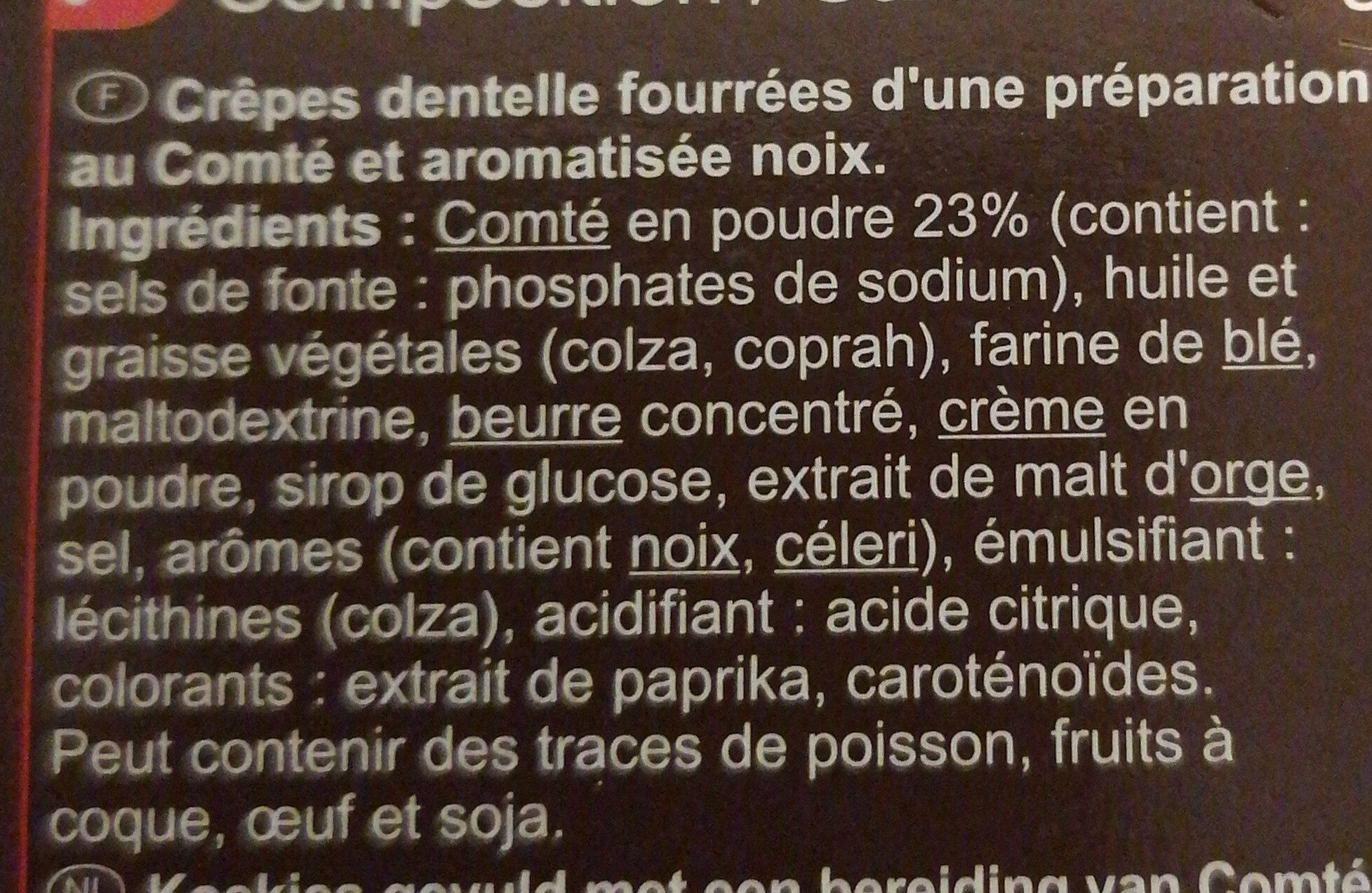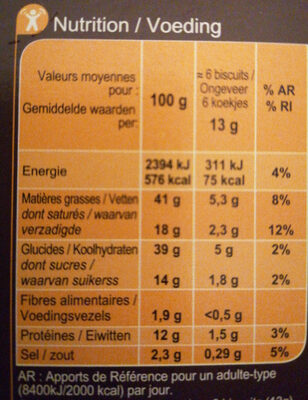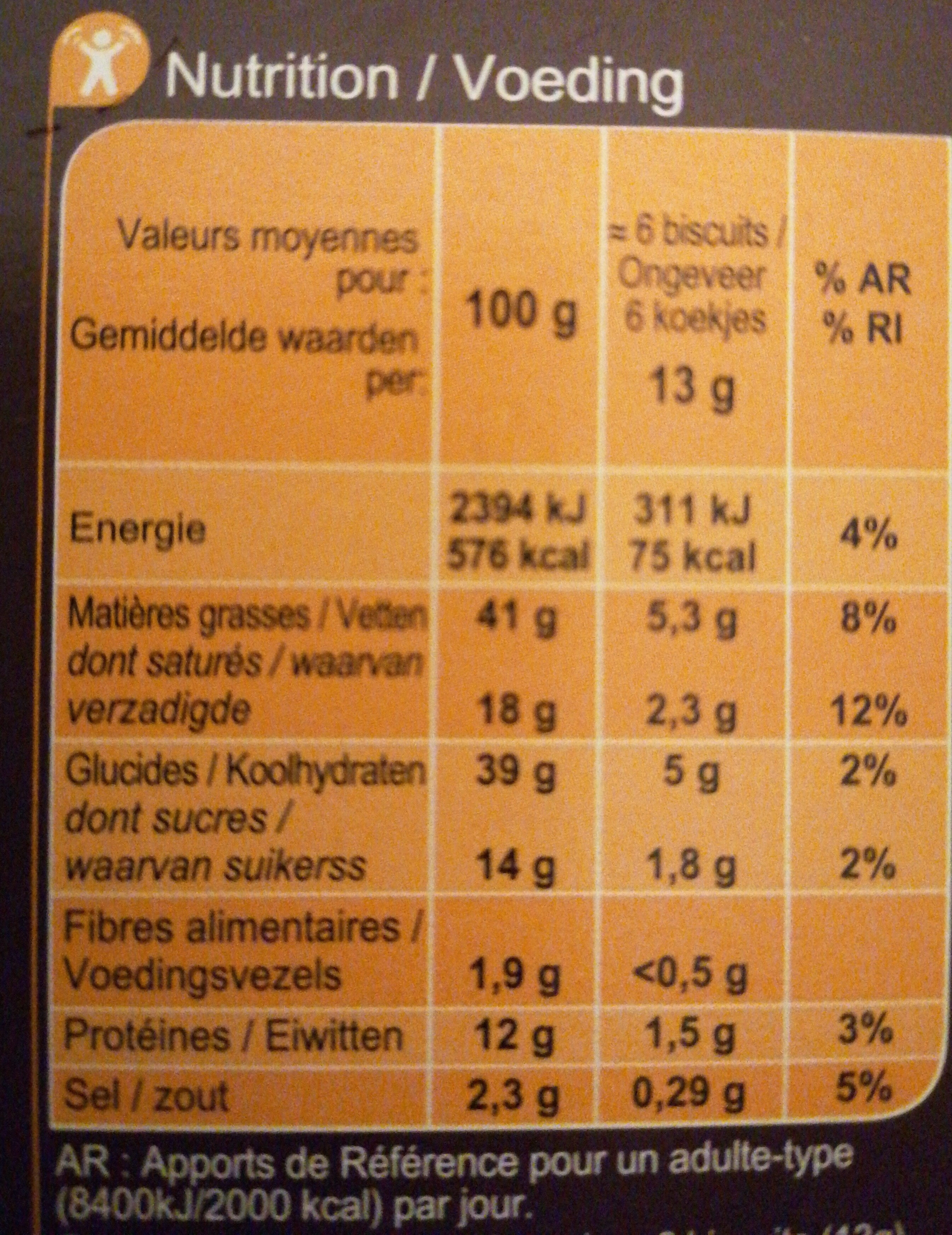Mini crêpes Fourrage au Comté - saveur Noix - Carrefour - 65 g
Aquesta pàgina del producte no està completa. Podeu ajudar a completar-la editant-la i afegint-hi més dades a partir de les fotos ja disponibles, o fent-ne més amb l'aplicació de androide o iPhone / iPad. Gràcies!
×
Algunes de les dades d’aquest producte les ha proporcionat directament el fabricant Carrefour.
Codi de barres: 3560071190408 (EAN / EAN-13)
Nom comú: Crêpes Dentelle fourrées (57%) d'une préparation au Comté déshydraté saveur Noix.
Quantitat: 65 g
Empaquetament: fr:Boîte carton, fr:Sachet plastique / aluminium
Marques: Carrefour
Categories: Snacks, Aperitius salats, Aperitius, Galetes salades, en:Puffed salty snacks, en:Salty snacks crackers garnished with cheese
Etiquetes, certificacions, premis:
Punt verd, Fet a França
Codi de traçabilitat: EMB 29217A - Pont-Aven (Finistère, France)
Botigues: Carrefour
Matching with your preferences
Altres dades
Condicions de conservació: À conserver dans un endroit frais et sec. Pour une dégustation optimale, à consommer de préférence avant le / Numéro de lot : voir sur le côté du paquet. Après ouverture du sachet, à conserver dans un emballage hermétique et à consommer dans les 7 jours.
Servei al client: Interdis - TSA 91431 - 91343 MASSY Cedex - France.
Report a problem
Fonts de dades
Producte afegit per openfoodfacts-contributors
Última modificació de la pàgina del producte per naruyoko.
La pàgina del producte, també editada per ecoscore-impact-estimator, kiliweb, off.3ccf874c-cd40-4ad9-beed-00d5c03e74c1, org-carrefour, packbot, roboto-app, teolemon, ticqs, yuka.UTRJTUhiMGZtOWtMbzhVTzRTN2MrTmtwbjVxa2VEdVpML1l0SVE9PQ.












